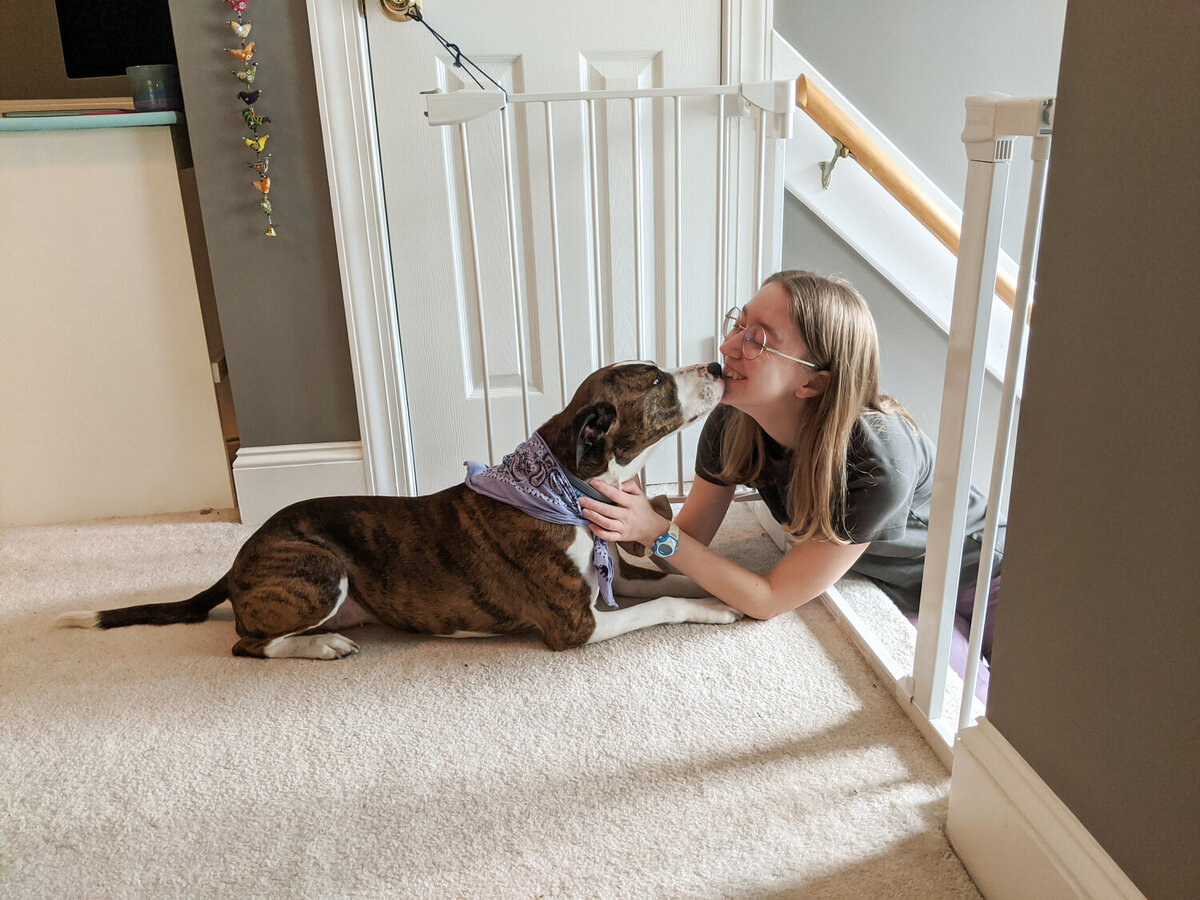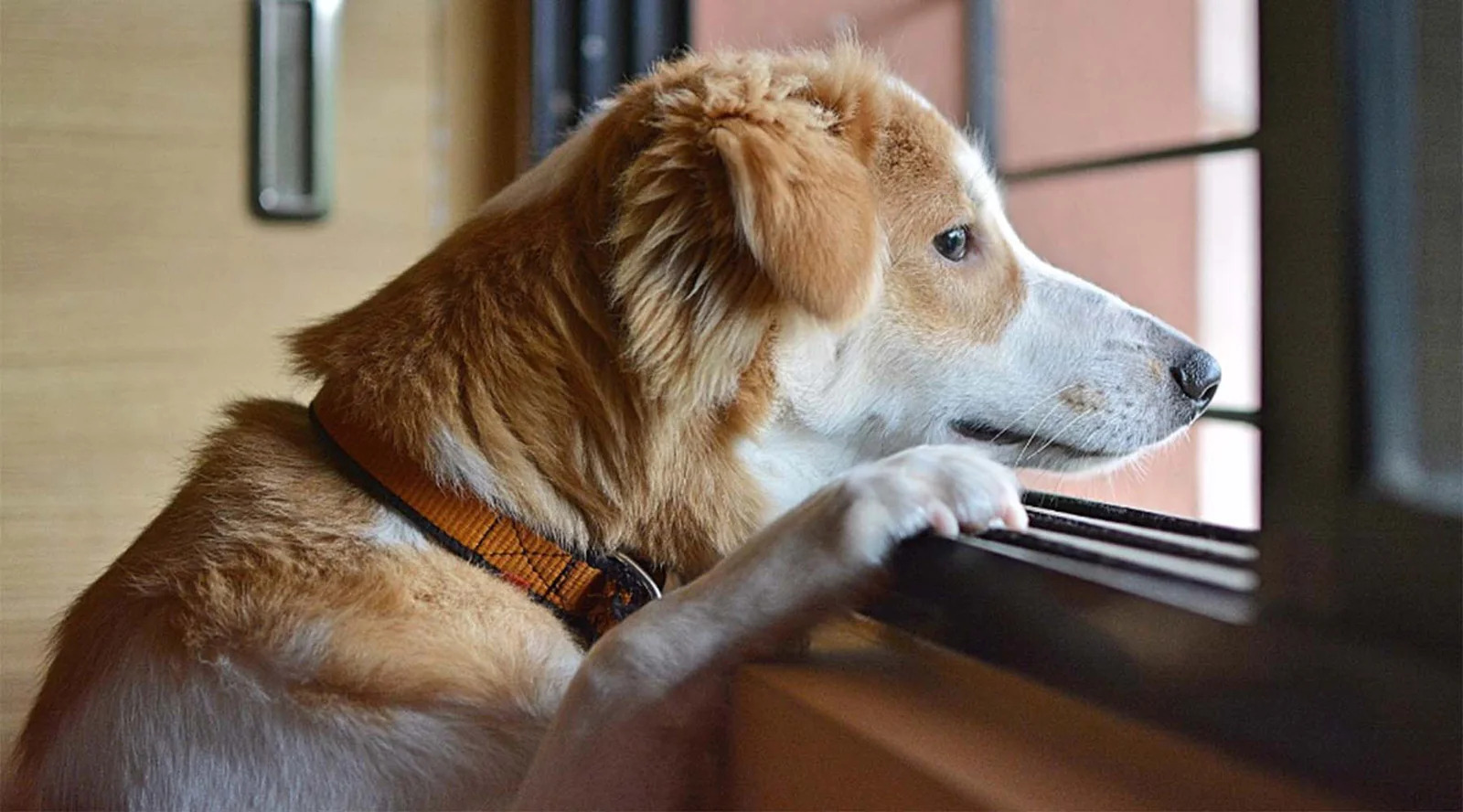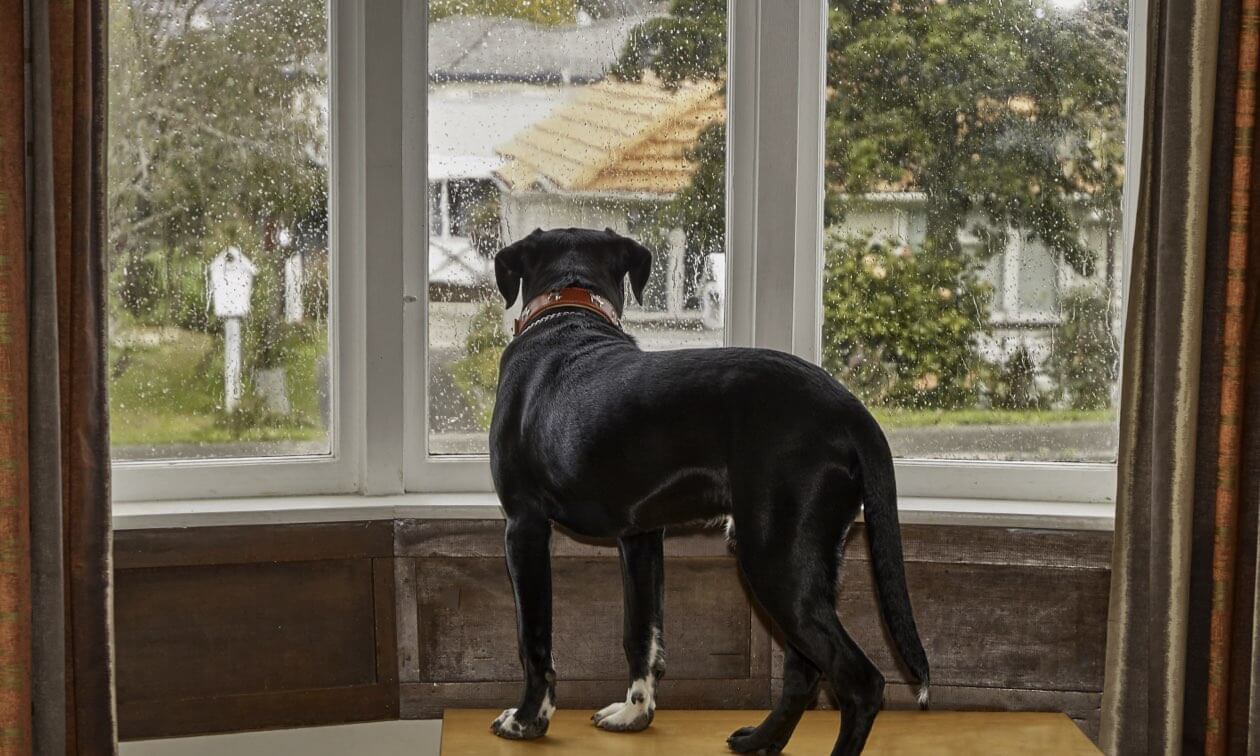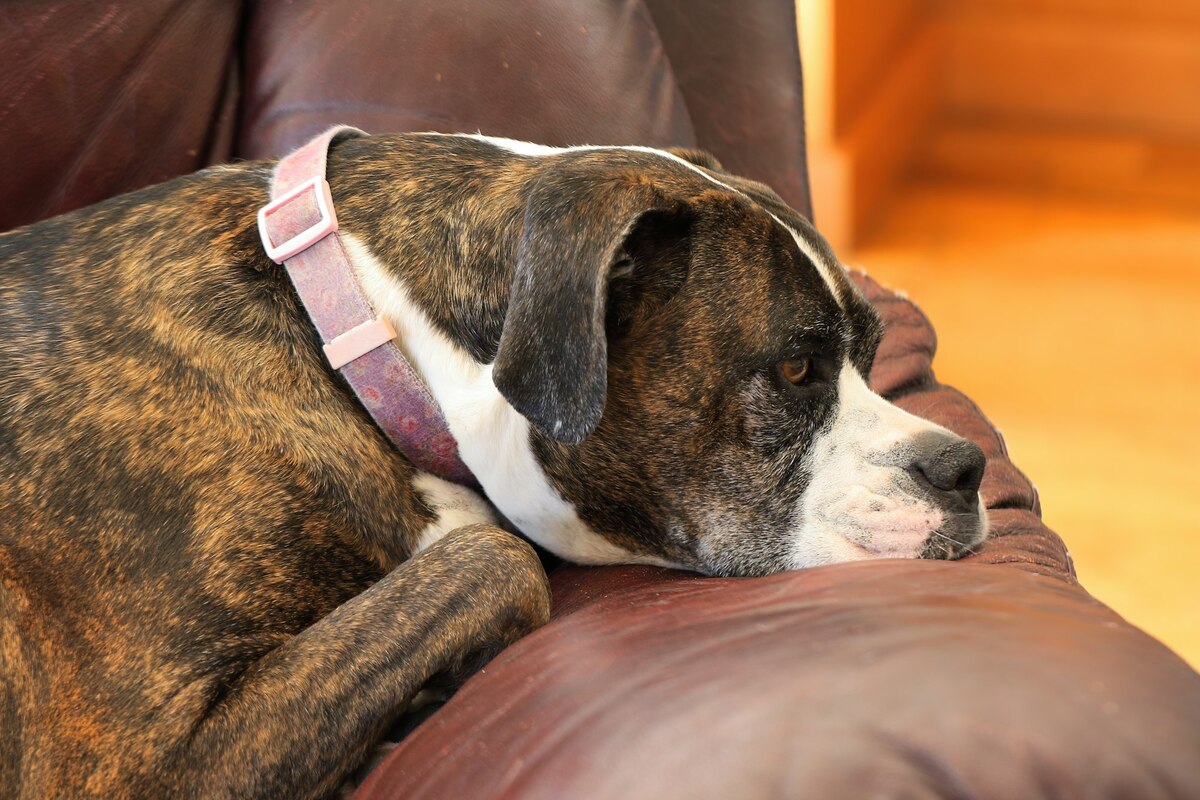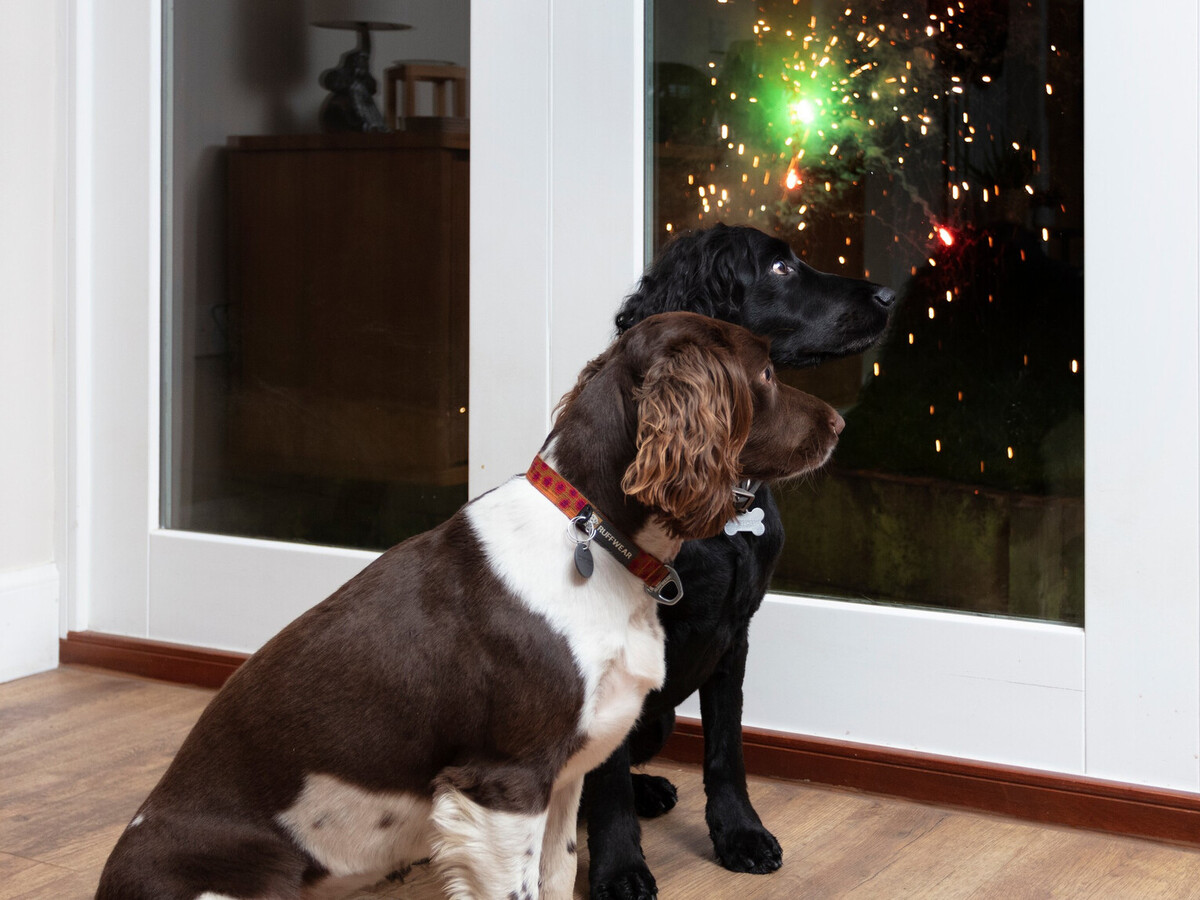Home>Health & Wellness>Behavior & Cognitive Care>How To Stop A Dog With Separation Anxiety From Pooping In The House


Behavior & Cognitive Care
How To Stop A Dog With Separation Anxiety From Pooping In The House
Published: January 29, 2024
Learn effective strategies to prevent your dog with separation anxiety from having accidents indoors. Discover behavior and cognitive care tips to stop your dog from pooping in the house.
(Many of the links in this article redirect to a specific reviewed product. Your purchase of these products through affiliate links helps to generate commission for Pawsomeoldies.com, at no extra cost. Learn more)
Table of Contents
- Understanding Separation Anxiety in Dogs
- Signs of Separation Anxiety in Dogs
- Tips for Managing Separation Anxiety in Dogs
- How to Stop a Dog with Separation Anxiety from Pooping in the House
- Creating a Safe and Comfortable Environment for Your Dog
- Training and Behavior Modification Techniques
- Seeking Professional Help for Severe Cases
Understanding Separation Anxiety in Dogs
Separation anxiety is a common behavioral issue that many dogs experience when they are separated from their owners or left alone. It can manifest in various ways, such as excessive barking, destructive behavior, and even inappropriate elimination, including pooping in the house. Understanding the root causes of separation anxiety is crucial in addressing this issue effectively.
Dogs are social animals that form strong bonds with their human companions. When left alone, they may experience distress and anxiety due to the absence of their trusted pack members. This can lead to behaviors that are attempts to alleviate their anxiety and reconnect with their owners. It's important to recognize that separation anxiety is not a result of disobedience or spite; rather, it stems from a deep emotional need for companionship and security.
Furthermore, certain factors can contribute to the development of separation anxiety in dogs. For instance, a history of abrupt changes in the dog's routine or environment, such as rehoming or being surrendered to a shelter, can trigger feelings of insecurity and fear of abandonment. Additionally, insufficient mental and physical stimulation, lack of proper training, or traumatic experiences can exacerbate separation anxiety in dogs.
Understanding the emotional and psychological aspects of separation anxiety is essential for pet owners to approach the issue with empathy and patience. By recognizing the distress that dogs experience when left alone, owners can take proactive steps to address their pet's anxiety and provide the necessary support and reassurance.
In the following sections, we will explore the signs of separation anxiety in dogs, practical tips for managing this condition, and effective strategies for preventing dogs from pooping in the house due to separation anxiety. By gaining a comprehensive understanding of separation anxiety and its impact on dogs, pet owners can take meaningful steps to help their furry companions feel more secure and content when left alone.
Signs of Separation Anxiety in Dogs
Recognizing the signs of separation anxiety in dogs is crucial for pet owners to address this behavioral issue effectively. Dogs experiencing separation anxiety may exhibit a range of distressing behaviors when left alone, signaling their emotional turmoil and distress. By understanding these signs, pet owners can intervene early and provide the necessary support to alleviate their dog's anxiety.
-
Excessive Vocalization: Dogs with separation anxiety may engage in persistent barking, whining, or howling when left alone. This vocalization is a manifestation of their distress and an attempt to seek attention or comfort from their absent owners.
-
Destructive Behavior: Dogs suffering from separation anxiety may engage in destructive behaviors, such as chewing furniture, doors, or personal belongings. This behavior is often a result of their anxiety and attempts to cope with the stress of being alone.
-
Inappropriate Elimination: One of the most distressing signs of separation anxiety is when a dog exhibits inappropriate elimination indoors, including urinating or defecating in the house. This behavior is not due to a lack of house training but is a response to the overwhelming anxiety experienced when left alone.
-
Pacing and Restlessness: Dogs with separation anxiety may exhibit restless behavior, such as pacing back and forth or exhibiting signs of agitation. This constant movement is a reflection of their inner turmoil and their attempt to cope with the distress of being separated from their owners.
-
Escape Attempts: Some dogs may attempt to escape from the confinement of the house or crate when experiencing separation anxiety. This behavior is driven by their intense desire to reunite with their owners and alleviate their feelings of isolation and fear.
-
Excessive Salivation: Excessive drooling or salivation in the absence of any medical condition can be a sign of separation anxiety in dogs. This physiological response is a manifestation of their emotional distress and can be observed on return to the home.
-
Depression and Apathy: Dogs with separation anxiety may exhibit signs of depression, such as decreased interest in food, toys, or activities they typically enjoy. This apathetic behavior is a result of their emotional distress and feelings of abandonment.
By recognizing these signs of separation anxiety in dogs, pet owners can take proactive steps to address their dog's emotional well-being and implement strategies to alleviate their anxiety. Understanding these signs is the first step toward providing the necessary support and reassurance to help dogs feel more secure and content when left alone.
Tips for Managing Separation Anxiety in Dogs
Managing separation anxiety in dogs requires a multifaceted approach that encompasses understanding, empathy, and strategic interventions to help alleviate their distress. By implementing the following tips, pet owners can provide the necessary support to help their dogs cope with being alone and reduce the likelihood of distressing behaviors associated with separation anxiety.
Establish a Consistent Routine
Creating a predictable daily routine for your dog can instill a sense of security and stability, which is essential for managing separation anxiety. Consistency in feeding times, exercise, and interactions with your dog can help reduce their anxiety by providing a structured environment they can rely on.
Gradual Desensitization to Departures
Gradually acclimating your dog to your departures can help reduce their anxiety when left alone. Start by practicing short departures and gradually increase the duration over time. This gradual desensitization can help your dog become more accustomed to your absence and minimize their distress.
Provide Interactive Toys and Puzzles
Interactive toys and puzzles can engage your dog's mind and alleviate boredom when left alone. These toys can provide mental stimulation and serve as a positive distraction, helping to reduce anxiety and prevent destructive behaviors.
Create a Safe Space
Designate a specific area in your home, such as a comfortable crate or a cozy corner, as a safe space for your dog. This area should be associated with positive experiences and can serve as a retreat where your dog feels secure and relaxed in your absence.
Use Calming Aids
Calming aids, such as pheromone diffusers or calming music, can help create a soothing environment for your dog. These aids can promote relaxation and reduce anxiety, making the experience of being alone more manageable for your pet.
Seek Professional Training and Behavior Modification
Consulting a professional dog trainer or behaviorist can provide valuable insights and personalized strategies for managing separation anxiety. These experts can offer guidance on behavior modification techniques and training methods tailored to your dog's specific needs.
Avoid Punishment
Refrain from using punishment as a means of addressing separation anxiety. Punishment can exacerbate your dog's anxiety and lead to further distress. Instead, focus on positive reinforcement and creating a supportive environment to help your dog feel more secure when alone.
By implementing these tips, pet owners can take proactive steps to manage separation anxiety in dogs and create a supportive environment that promotes their emotional well-being. Understanding the unique needs of dogs experiencing separation anxiety is essential for implementing effective strategies that alleviate their distress and help them feel more secure and content when left alone.
How to Stop a Dog with Separation Anxiety from Pooping in the House
Addressing the issue of a dog with separation anxiety pooping in the house requires a comprehensive approach that focuses on the emotional well-being of the dog and the implementation of practical strategies to prevent this distressing behavior. By understanding the underlying causes and employing targeted interventions, pet owners can effectively mitigate the impact of separation anxiety on their dog's elimination habits.
Establish a Consistent Elimination Schedule
Creating a consistent elimination schedule for your dog can help regulate their bowel movements and reduce the likelihood of accidents in the house. Take your dog out for bathroom breaks at regular intervals, especially before and after periods of separation. This routine can help minimize the urge for your dog to eliminate indoors due to anxiety or uncertainty.
Monitor Food and Water Intake
Monitoring your dog's food and water intake can play a crucial role in managing their elimination patterns. By regulating meal times and ensuring access to water, you can establish a predictable schedule for your dog's digestive processes, reducing the likelihood of indoor accidents resulting from anxiety-related bowel movements.
Provide Adequate Exercise and Mental Stimulation
Regular exercise and mental stimulation are essential for promoting your dog's overall well-being and can contribute to better control over their elimination habits. Engage in physical activities and interactive play sessions with your dog to help alleviate their anxiety and encourage healthy bowel function, reducing the likelihood of indoor accidents.
Create a Designated Elimination Area
Designating a specific outdoor elimination area for your dog can reinforce appropriate elimination behaviors. By consistently directing your dog to this designated spot, you can establish a routine that encourages them to eliminate in the appropriate location, minimizing the occurrence of indoor accidents associated with separation anxiety.
Utilize Positive Reinforcement and Rewards
Implementing positive reinforcement techniques can encourage desired elimination behaviors and reinforce your dog's confidence. Praise and reward your dog for eliminating in the designated outdoor area, creating positive associations that can help alleviate anxiety-related elimination indoors.
Seek Professional Guidance
In severe cases where a dog's separation anxiety significantly impacts their elimination habits, seeking professional guidance from a veterinarian or animal behaviorist is advisable. These experts can provide tailored strategies and interventions to address the underlying anxiety and its impact on the dog's elimination behavior.
By implementing these proactive measures and understanding the unique needs of dogs with separation anxiety, pet owners can effectively address the challenge of preventing their dog from pooping in the house due to anxiety-related factors. This holistic approach prioritizes the emotional well-being of the dog and aims to create a supportive environment that promotes healthy elimination habits and reduces the distress associated with separation anxiety.
Creating a Safe and Comfortable Environment for Your Dog
Creating a safe and comfortable environment for your dog is essential for addressing separation anxiety and promoting their overall well-being. By establishing a supportive and nurturing space, pet owners can help alleviate their dog's distress and provide a sense of security during periods of solitude.
Designate a Safe Space
Designating a specific area within your home as a safe space for your dog can offer a retreat where they feel secure and relaxed. This space can be a cozy corner, a comfortable crate, or a designated room equipped with their favorite bedding and toys. By associating this area with positive experiences and comfort, you can provide your dog with a refuge where they can seek solace when feeling anxious or alone.
Provide Comforting Items
Incorporating comforting items, such as familiar blankets, toys, or clothing with your scent, can offer reassurance to your dog in your absence. These items carry familiar scents and provide a source of comfort, helping to mitigate feelings of loneliness and anxiety. Additionally, soothing music or white noise can create a calming ambiance within the environment, promoting relaxation and reducing stress.
Ensure Adequate Shelter and Security
For outdoor spaces, ensuring that your dog has access to adequate shelter and security is crucial. A weatherproof and comfortable shelter can offer protection from the elements, providing a safe retreat when your dog spends time outdoors. Additionally, secure fencing and gates can prevent escape attempts, minimizing the risk of distress associated with feeling exposed or vulnerable.
Read more: How To Stop Dog Anxiety Peeing
Maintain a Clean and Organized Environment
A clean and organized environment can contribute to your dog's sense of security and well-being. By keeping their living space tidy and free from clutter, you can create a calming atmosphere that promotes relaxation. Regular cleaning and maintenance of their living area demonstrate care and consideration, reinforcing a sense of stability and comfort for your dog.
Establish Predictable Routines
Consistency in daily routines, including feeding times, exercise, and interactions, can instill a sense of predictability and security for your dog. Predictable routines provide a structured environment that your dog can rely on, reducing uncertainty and anxiety associated with abrupt changes. By establishing consistent patterns, you can help your dog feel more at ease and less distressed when left alone.
By implementing these strategies and creating a safe and comfortable environment for your dog, you can significantly contribute to managing their separation anxiety and promoting their emotional well-being. Understanding the importance of a supportive environment and its impact on your dog's mental and emotional state is fundamental in addressing separation anxiety and fostering a harmonious and secure living space for your beloved pet.
Training and Behavior Modification Techniques
Training and behavior modification techniques play a pivotal role in addressing separation anxiety in dogs and mitigating the distressing behaviors associated with this condition. By implementing targeted training methods and behavior modification strategies, pet owners can help their dogs develop coping mechanisms and alleviate the emotional turmoil experienced when left alone.
Desensitization and Counterconditioning
Desensitization and counterconditioning are fundamental techniques used to modify a dog's response to being separated from their owners. Desensitization involves gradually exposing the dog to periods of separation in a controlled and systematic manner, starting with short durations and progressively increasing the time apart. This gradual approach helps the dog acclimate to being alone and reduces the anxiety associated with separation. Counterconditioning involves pairing the experience of being alone with positive associations, such as special treats or engaging toys, to reframe the dog's perception of solitude as a positive and rewarding experience.
Read more: How To Stop Anxiety-Induced Panting In Dogs
Crate Training
Crate training can be an effective tool in managing separation anxiety and providing dogs with a secure and den-like environment. When introduced properly, a crate can serve as a safe space where the dog feels protected and comfortable. By associating the crate with positive experiences and gradually acclimating the dog to spending time inside, pet owners can help alleviate anxiety and prevent destructive behaviors during periods of separation.
Obedience Training
Obedience training lays the foundation for building a strong and trusting relationship between the dog and their owner. Teaching basic commands, such as "sit," "stay," and "come," can instill a sense of structure and discipline, contributing to the dog's overall confidence and security. Obedience training also provides mental stimulation and reinforces the bond between the dog and their owner, which can help reduce anxiety when left alone.
Engaging in Interactive Play and Exercise
Regular physical exercise and engaging in interactive play sessions are essential for promoting a dog's physical and mental well-being. Physical activity helps reduce stress and anxiety, while mental stimulation through interactive play can divert the dog's attention away from feelings of distress. Incorporating these activities into the dog's routine can contribute to a more balanced and resilient response to being alone.
Consistency and Patience
Consistency and patience are key principles in training and behavior modification for dogs with separation anxiety. Establishing consistent routines, implementing training techniques with patience and understanding, and maintaining a supportive and nurturing environment are essential for the success of these strategies. It's important for pet owners to approach training and behavior modification with empathy and a deep understanding of their dog's emotional needs.
By incorporating these training and behavior modification techniques into their approach, pet owners can make significant strides in helping their dogs manage separation anxiety and develop healthier coping mechanisms. Understanding the unique needs of each dog and tailoring the training methods to suit their individual temperament and experiences is crucial for achieving positive outcomes in addressing separation anxiety and promoting emotional well-being.
Seeking Professional Help for Severe Cases
In severe cases of separation anxiety in dogs, seeking professional help from a veterinarian or certified animal behaviorist is paramount to address the complex emotional and behavioral challenges faced by the dog. Professional intervention offers specialized expertise and personalized guidance tailored to the specific needs of the dog, aiming to alleviate their distress and improve their overall well-being.
A veterinarian can conduct a comprehensive assessment to rule out any underlying medical conditions that may contribute to the dog's anxiety. Physical health issues, such as urinary tract infections or gastrointestinal disorders, can manifest as behavioral symptoms, including inappropriate elimination, which may exacerbate separation anxiety. By addressing any potential medical concerns, the veterinarian can ensure a holistic approach to managing the dog's anxiety.
Furthermore, a certified animal behaviorist possesses the expertise to evaluate the dog's behavior in the context of their environment, history, and individual temperament. Through careful observation and analysis, the behaviorist can develop a tailored behavior modification plan that addresses the underlying triggers of separation anxiety and implements targeted interventions to promote positive behavioral changes.
Behavior modification plans may encompass desensitization and counterconditioning techniques, gradual exposure to periods of separation, and the implementation of structured routines to instill a sense of predictability and security for the dog. Additionally, the behaviorist can provide guidance on creating a supportive environment, implementing interactive play and mental stimulation, and fostering a strong bond between the dog and their owner to enhance their resilience and coping mechanisms.
Professional help also extends to educating and supporting pet owners in understanding the nuances of separation anxiety and implementing effective strategies at home. By empowering pet owners with the knowledge and skills to address their dog's anxiety, the veterinarian and behaviorist play a crucial role in fostering a harmonious and supportive relationship between the dog and their human companions.
In severe cases of separation anxiety, professional intervention offers a comprehensive and tailored approach to address the complex emotional and behavioral challenges faced by the dog. By collaborating with experienced professionals, pet owners can navigate the intricacies of separation anxiety and work towards creating a nurturing and supportive environment that promotes their dog's emotional well-being and overall quality of life.
